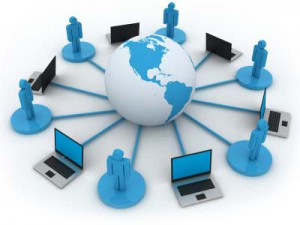 Years ago, real estate agents gathered for breakfast with wrinkled sheets of paper culled from notes that took at listing presentations. Of course, they were not listing presentations at the time. It was more like a walk around the place. Someone in the area, often a relative or a neighbor, was trusted for selling property. There were not a lot of transactions then. Many families homesteaded their land, like my great grandfather. Today the decedents of that family occupy that property, subdivided as necessary to provide homes for grown children.
Years ago, real estate agents gathered for breakfast with wrinkled sheets of paper culled from notes that took at listing presentations. Of course, they were not listing presentations at the time. It was more like a walk around the place. Someone in the area, often a relative or a neighbor, was trusted for selling property. There were not a lot of transactions then. Many families homesteaded their land, like my great grandfather. Today the decedents of that family occupy that property, subdivided as necessary to provide homes for grown children.
Real estate information is something that people knew long before it was a database. They did not need to go to the courthouse to look up who owned a parcel. They were at the funeral when Mr. Gibbs died. They embraced his children as they mourned. They spoke in whispers about how the family wanted to transfer the deed. It was personal, and only involved a sale when there were debts that had to be settled. More often than not, trades were done within the family.
I imagine that the real estate breakfast roundtable was a noisy place in those days. Today it is MLS software. Somehow, less personally communicating facts and little humanity. But, it is efficient and effective. It’s the modern way.
I had a similar conversation regarding a family lot in Alabama recently. In this case, the lumber on the land is worth more than the land itself. Once the lumber is harvested they leave the stumps behind, rendering the land useless for farming, pasture, or households until the lumber grows back – 25 years or so. Selling the land to the lumber mill kills the land, and the family blood with it. It’s a place where generations of kin were raised. Real estate agents always shake their head when property is sold then destroyed. Looking after the land, neighborhoods, and families is always been the soulful charter. The real estate agents and brokers who were evolutionary developers of the MLS pictured it as a database only.
Trend 1 – MLS Agent-to-Agent Communication in the MLS
Today’s MLS is devoid of many of these stories, or as I said, humanity. They do not facilitate conversations. It is a tragic loss. Broker office meetings and the weekly Association of REALTOR® meetings are the last vestiges of that, and perhaps the most valuable. We do see some semblance emerging in Open House feedback tools. There is a little more conversational functionality in VOW solutions like Listingbook. I am not familiar with an MLS system that has chat, but it could be easily be layered in as a browser plugin. Santa Barbara AOR just installed a solution from Cisco that has chat, text, and click to call.
These types of communication solutions will support improved information sharing among REALTORS and deliver more humanity back into the MLS. I believe that is vital to the heartbeat of our industry. I hope more MLSs and vendors see the importance of this functionality. Transmitting data and allowing practitioners to communicate effectively is the next evolution of the MLS.
Trend 2 – MLS to ASP Communications
MLSs have long suffered criticism for leveling the playing field. There are three types of MLS services. Some application services (ASP is an acronym for application service provider or, in parlance, a software developer) are considered a utility. Brokers do not see utilitarian MLS services to be a threat to their business. There are others that would be considered an agent-consumer business tool that brokers believe levels the playing field. The third category is products that fall somewhere in the middle. Boards of Directors decide where solutions fit into these categories. There is black, white and grey.
I advocated for broad MLS services against an industry executive that took the position that all MLS services level the playing field. My argument was for applications that worked together (Integrated MLS apps). I argued for applications that have a single source for customer support (the MLS). MLS applications are often delivered for pennies or dollars per user rather than tens or hundreds of dollars to independent agents or brokers. The MLS group buys save everyone in the industry money, but they do level the playing field.
I lost the argument, but we found mutual ground on an understanding that the MLS is a mutual benefit, a greater good, or as he argued, a “necessary evil.” He agreed that every market draws the lines in different ways. He also agreed that local culture should dictate policy.
The next necessary evolution of MLSs is to allow data to be communicated more effectively at a database level. MLSs need to evolve to accept data from other MLSs to promote the levels of data sharing across contiguous markets. There are many markets sharing data today, but the process for doing that is clunky amidst an environment devoid of solid API standards. The industry needs to fix this. RESO data standards, MLS rules normalization, and data flow into and out of the MLS via API are emerging. They are called Upstream by some, and Advanced Multilist Platforms by others. Two way data flow is what they amount to. These are exciting times.
I look forward to talking about these topics at the upcoming CMLS meetings and National Association of REALTOR meetings. If you like, feel free to give me a call or drop me a note with your questions or feedback.





Victor,
This was a great article.
Thank you,
~A
Thanks Amy
Victor,
Spot on analysis.
Effective communication needs to happen between all stakeholders. Many have focused on just agent-client collaboration.
The next generation of tools will facilitate collaboration agent-consumer, agent-agent, and consumer-consumer.
Aaron
HomeSpotter
You are likely one of the guys that will lead the charge Aaron.